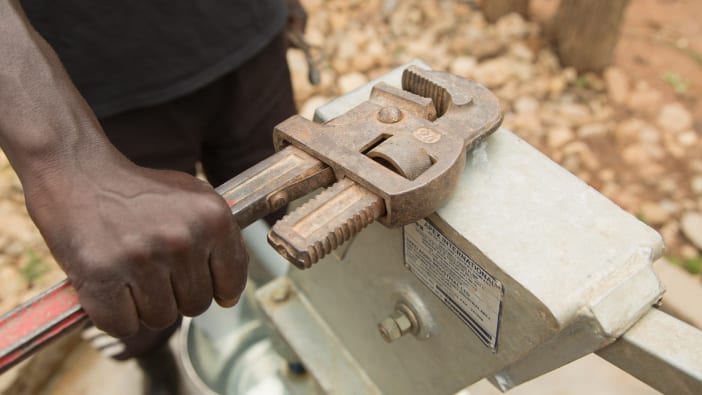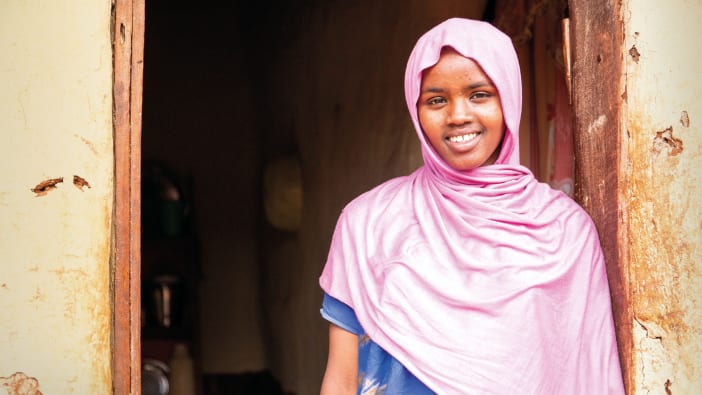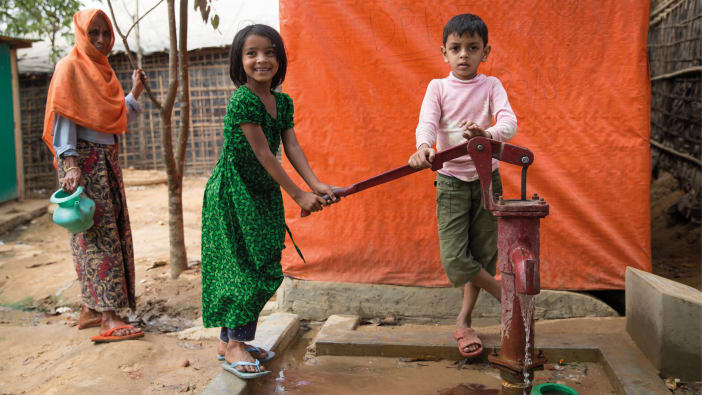By Richard Franceys.
We tend to expect that water schemes to make cleaner water more easily available will be welcomed by all. But all too often they may not work out as planned. There are many things to consider before introducing changes to water supplies which may have remained little changed for generations. Collecting water may provide many women with a meeting place. In societies where it is the younger women who collect the water, the water hole may even be the main centre for courtship! Here we look at some examples of different water schemes and what can help them to succeed…
We all need clean water to be healthy – and we want that clean water as close as possible to our homes in order to save time, especially the time of women. The difficulty is to improve the delivery of clean water in such a way that it will stay improved for many years to come.
Case study 1: Giripagama
Giripagama is a new village in Sri Lanka, part of the ambitious “Million House Programme”, and it needed an improved water supply. The government agency responsible constructed a new open well in the centre of this village of 53 houses. It cost £400. The people complained that they could not drink the water because of the high levels of “mica” which gave it a bad taste. The well was only used therefore, for washing in the dry season, when the stream running through the centre of the village dried up.
An alternative scheme was then proposed by the villagers. This would bring piped water, from a perennial stream further up the valley, to standposts situated in the village. The cost of this scheme was estimated to be £2,500 but this was too much for the government to pay.
Then along came a foreign agency who wanted to try out a new system. They proposed to provide each house with a rainwater catchment tank at a cost of about £100 each. This total cost of £5,300 was thought to be acceptable because the money was being given by foreigners, although it cost a lot more than the scheme the people actually wanted.
The cement-plastered brick catchment tanks were built by contractors, not by the people. They had been carefully designed, except for the roof, which was just a couple of pieces of galvanised, corrugated iron, weighted down with a piece of timber.
Two years after the scheme was completed, the village President made it quite clear that the villagers did not like the tanks. He reported that “nobody uses water for drinking, only for washing”. The people were, therefore, continuing to use the local stream for drinking water. There was excreta on a stone in the middle of the stream and it is unlikely that there had been any measurable health benefits resulting from the new rainwater scheme.
The main reason behind the people's dislike of the tank was the mosquitoes. Because the roofs were not properly fitted and sealed, mosquitoes were breeding in the water tanks. Therefore the water could not be drunk and also the people could not sleep because their windows were not screened against the mosquitoes.
So the pictures of Giripagama show a well which is not being used, and rainwater tanks which, in this case, do not provide clean drinking water.
Case study 2: Camp 28
But now, let's move on to another village, Camp, in Southern Sudan. Some years ago a Tear Fund worker, Roger Sharland, was setting up an agricultural extension programme in the district.
Visiting Camp 28, the development workers explained what they had been doing in other areas. The people were interested in improving their agriculture, but their real problem was water. The project staff, who were really agriculturalists, realised that they had to take this need seriously. The community showed them their water sources, which dried up in the dry season: a shallow well, a stream about 3 km away and finally some nearby rocks where a crack formed a natural cistern.
After further discussions and visits it was decided that it would be a good idea to try to increase the size of this natural cistern in the rocks. This was very near to the village and would cost less to improve.
Work did not go smoothly; there were various delays. But eventually all the rubbish and soil which had accumulated in the crack was cleaned out. This increased the size of the cistern but water still leaked out. Following advice from an engineer on a nearby project, the bottom of the cistern was sealed off with stone and cement and the open end was closed with ferro-cement. The agency supplied the materials and expertise but it was the people who planned and carried out the work.
As a result of this cistern, water from the first rains was collected, so that the people could move back early from their dry season homes. As a result, work in their gardens could be started several weeks earlier than in previous years, leading to much improved crops.
What makes for success?
So we have two villages, one where a lot of money was spent, without helping the people very much, and another where almost no money was spent but lives were changed as a result. What made the difference was community participation.
It is the local people themselves, not those trying to help them, who have the most important role. The community itself must make the first decisions, raise the initial funds and begin the work of organising and maintaining the work.How to encourage community participation
The first step in improving any water supply, is to get people together to discuss the problems and set up a Village Water Committee, or a Village Development Committee, if one does not already exist. Try to make sure that there is a wide range of people represented on the committee, young and old, richer and poorer, health workers and teachers, but make especially sure that women are well represented. They are the ones who normally have to do all the work of bringing water to the home.
Choose a Chairman (or Chairwoman), who will be responsible for organising and conducting the meeting. Also think about having a Secretary, who takes notes of the meeting.
Once the Water Committee is established, it can begin to discuss the problems. It is best to start with what is available.
Try to avoid any massive new water systems!
First, survey all the existing water sources. School children can often be a great help to the Committee in gathering information about the sources, perhaps as part of a school project.
Then consider what is wrong with these existing sources: perhaps they are dirty, or too far away, or maybe they dry up in the dry season.
Then is the time to discuss what could be done to improve these existing sources. Work with what you have List the skills which your community has, list the materials which you have and think about how much people could give to pay for improvements. It is very nice to have the government, or outsiders, come in and give you a new water system – but the problem is that they always go away again without leaving money for maintenance and repairs.
When you have a good idea of the possible alternative improvements, and what you can do yourselves, then call in the outsiders for technical, and maybe a little financial, help. These people could be from the government Rural Water Supply Programme or from a non-governmental organisation which has experts in water supply. But don’t let them take you over – remember that it is your project to improve your lives.
This approach often seems to take longer – maybe a year or two go by in discussions. But the end result will be a scheme which is owned by the community and which can be sustained by the community.
Richard Franceys, who previously worked for Tearfund in Southern Sudan, is a water engineer in the Water, Engineering and Development Centre, Loughborough University of Technology.









